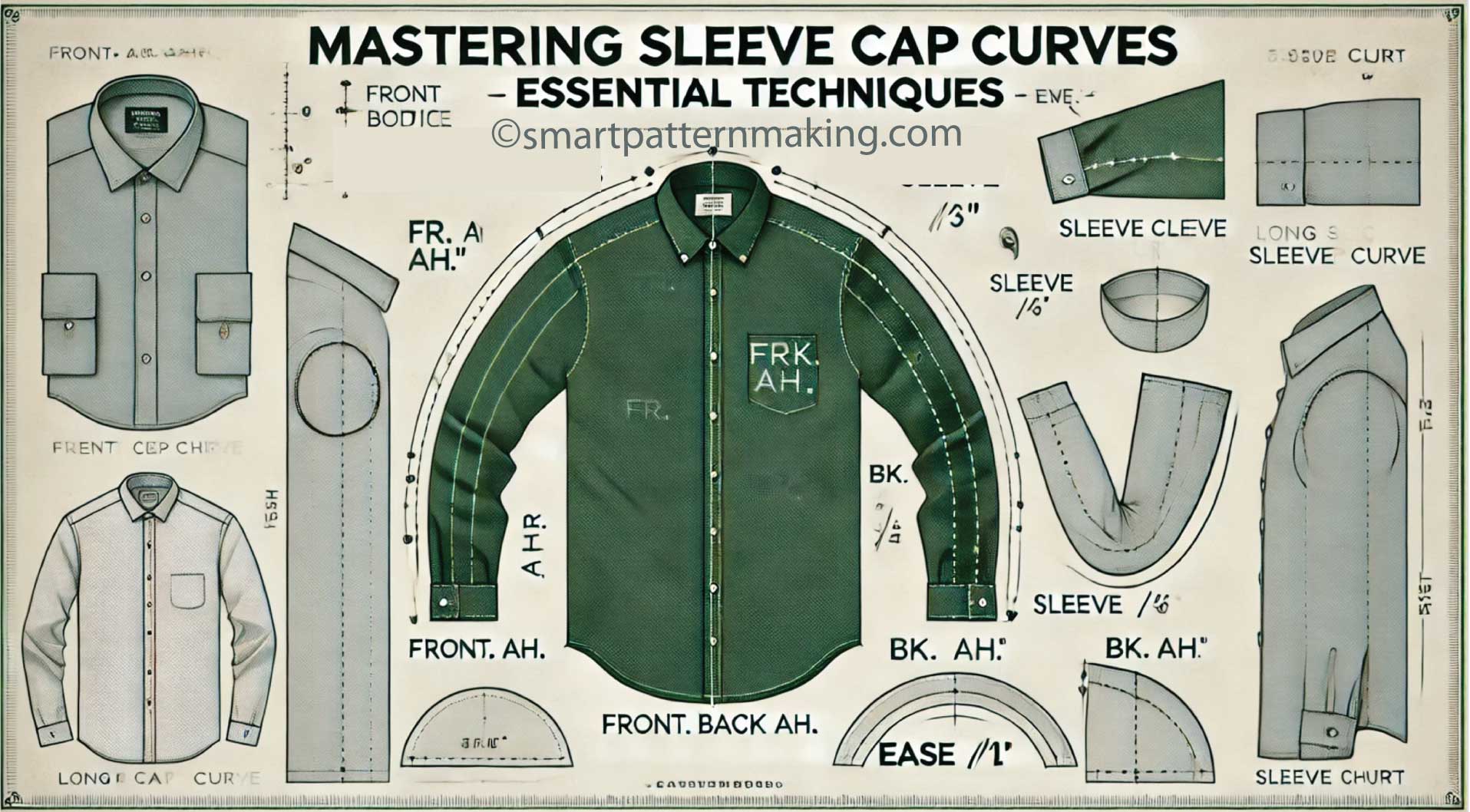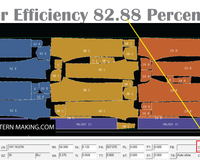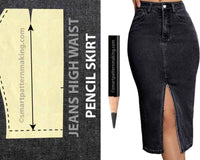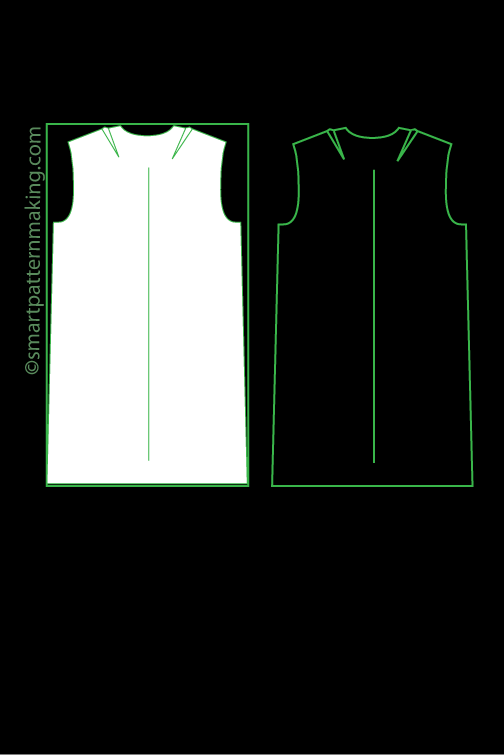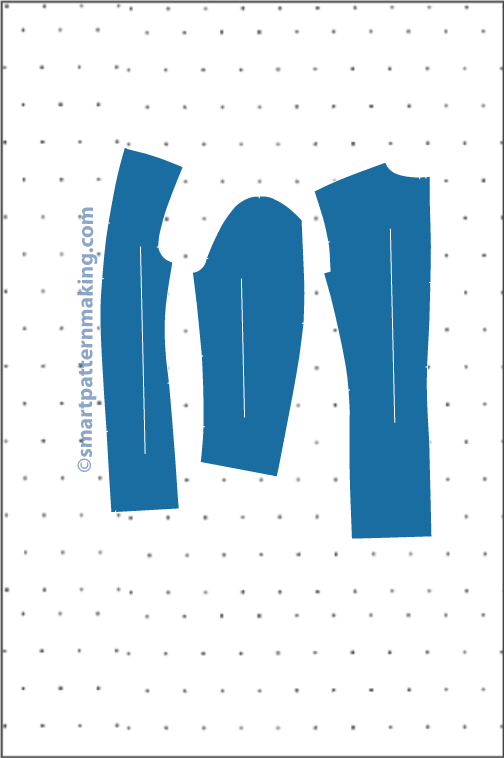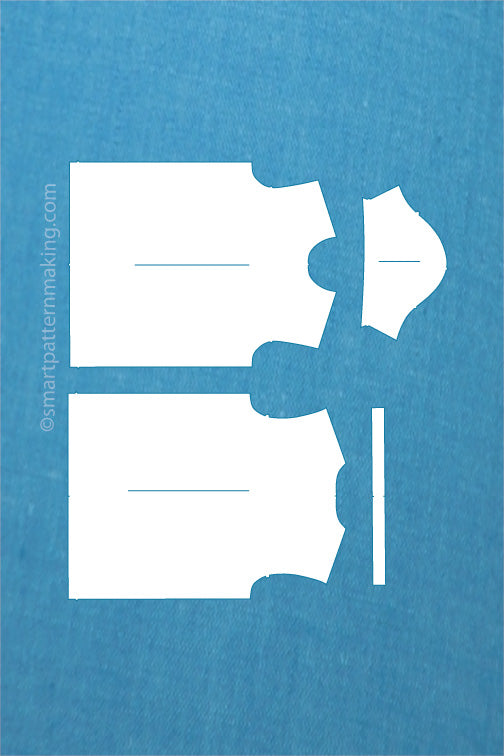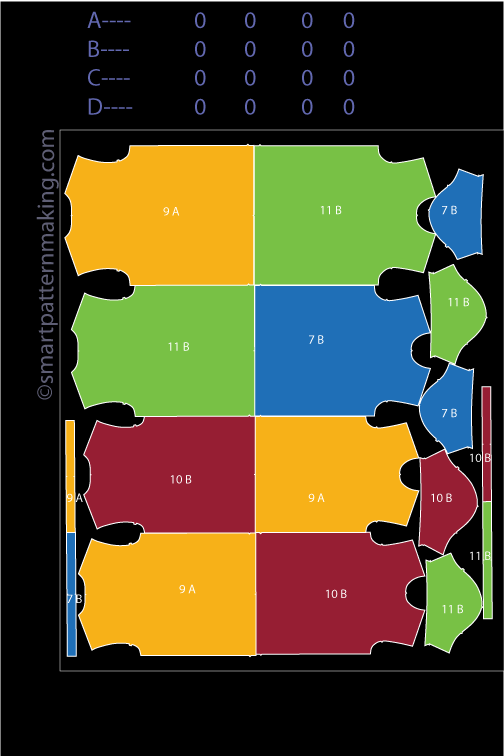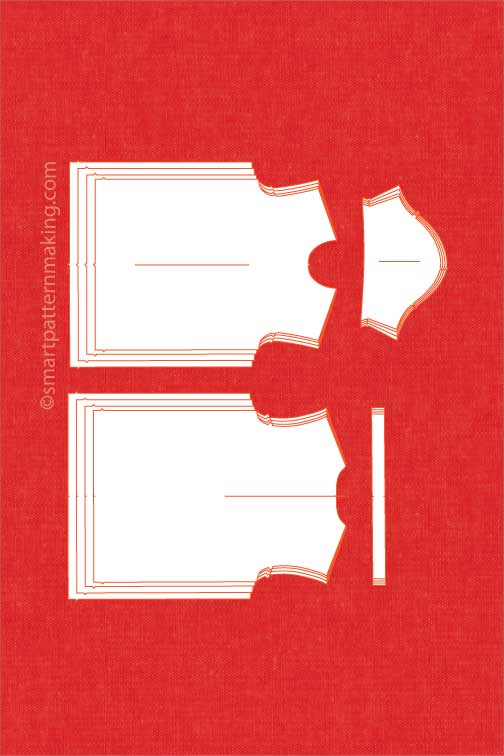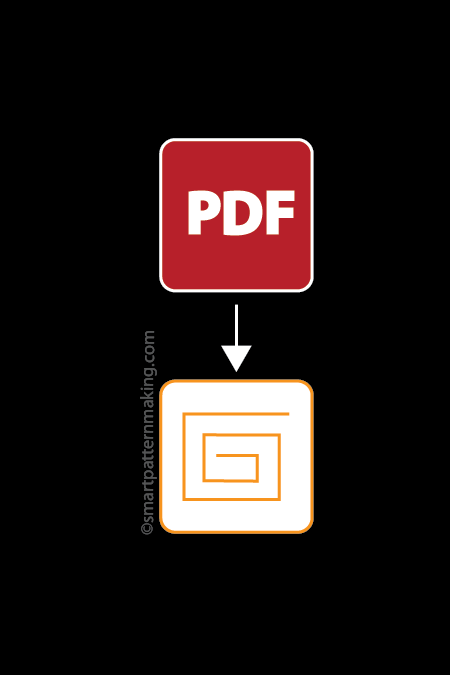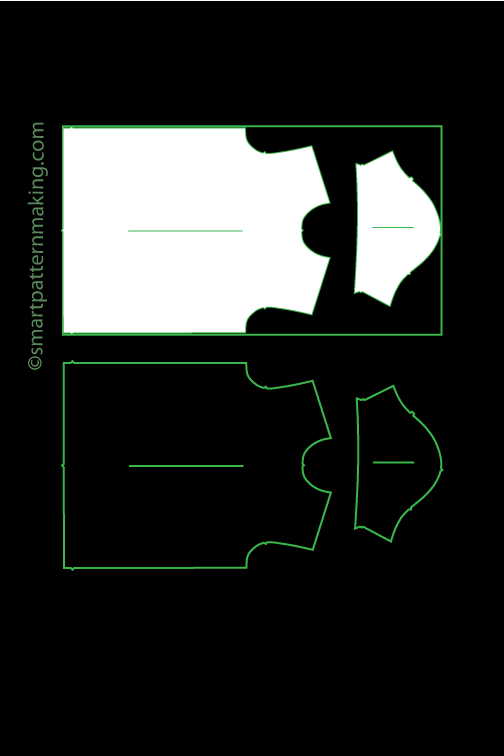Introduction to Sleeve Cap Curves
Mastering the Sleeve Cap Curve is essential for any fashion designer aiming to create well-fitting, stylish garments. This guide covers the essential techniques needed to understand and perfect sleeve cap curves.
Key Points:
- Enhance your pattern-making skills
- Achieve professional results
- Ensure comfort and style
Whether you're a novice or an experienced designer, these insights will enhance your pattern-making skills. From understanding the basic anatomy of a sleeve cap to advanced fitting techniques, this comprehensive guide provides the knowledge necessary to achieve professional results. By mastering these skills, you'll be able to create sleeves that not only look great but also fit perfectly, ensuring your garments are comfortable and stylish.
What is a Sleeve Cap Curve?
A sleeve cap curve is the upper, rounded portion of the sleeve pattern that fits into the armhole of a garment.
Importance:
- Determines sleeve attachment and drape
- Ensures smooth, comfortable fit
- Prevents wrinkles and pulling
A well-drafted sleeve cap curve ensures a smooth, comfortable fit, allowing for ease of movement without causing wrinkles or pulling. Understanding and mastering the sleeve cap curve is vital for creating professional-looking garments with precise fits, whether for casual wear or high-fashion pieces. Properly drafting this curve is fundamental to garment construction, ensuring that the sleeve fits seamlessly into the armhole.

Importance in Fashion Design
The sleeve cap curve is critical in fashion design because it directly influences the fit and appearance of the garment.
Benefits:
- Enhances garment aesthetic and functionality
- Ensures correct shoulder fit and drape
- Impacts comfort and appearance
A poorly designed sleeve cap can result in an ill-fitting sleeve that restricts movement and causes discomfort. Conversely, a well-crafted sleeve cap curve enhances the garment's overall aesthetic and functionality. Mastering the sleeve cap curve is essential for any fashion designer seeking to create high-quality, well-fitting garments. This skill impacts both the garment's appearance and the wearer's comfort, making it a vital component of professional fashion design.

Understanding Sleeve Cap Curves
Understanding sleeve cap curves involves knowing how they interact with the armhole and the overall garment design.
Components:
- Armhole shape
- Sleeve length
- Required ease
The curve's shape and length must be tailored to match the armhole's contour, ensuring a smooth, seamless fit. Key factors include the armhole shape, sleeve length, and the amount of ease required for movement. By mastering the nuances of sleeve cap curves, designers can create sleeves that fit perfectly and enhance the garment's silhouette. This knowledge is fundamental for achieving professional results in garment construction and ensuring that sleeves fit comfortably and aesthetically.

Basics of Sleeve Cap Curves
The basics of sleeve cap curves include understanding their shape and how they fit into the armhole.
Key Measurements:
- Armhole depth
- Sleeve cap height
- Amount of ease
T-Shirt Sleeve Cap Curve:
- Sleeve Cap Height: T-shirts typically feature a short sleeve cap height, offering a relaxed fit with less shaping around the shoulder. This style is ideal for everyday wear, providing comfort and ease of movement without the tightness associated with a longer cap height.
- Armhole Shape: The front and back bodice armholes in T-shirts have a less curved shape, designed for a more contoured fit and longer armhole depth. This ensures comfort and flexibility, accommodating the user's natural movements.

Button-Up Shirt Sleeve Cap Curves:
- Sleeve Cap Height: Button-up shirts usually have a long sleeve cap height, allowing for greater ease of movement and accommodating the broader shoulder structure. The extended height ensures that the sleeve drapes elegantly from the shoulder, giving a formal and structured appearance.
- Armhole Shape: Button-up shirts typically feature more curved armholes, essential for a structured fit. This curvature enhances the shirt's formal look while providing the necessary range of motion.

Anatomy of a Sleeve Cap
The anatomy of a sleeve cap includes several key components.
Components:
- Cap height
- Cap width
- Notches for alignment
The cap height is the distance from the top of the sleeve cap to the bicep line. The cap width is the measurement across the widest part of the sleeve cap. Notches indicate where the sleeve cap aligns with the front and back armholes. Understanding these components is essential for drafting a well-fitting sleeve cap. Each part plays a crucial role in ensuring the sleeve fits smoothly into the armhole and drapes correctly on the shoulder.

Key Measurements for Sleeve Cap Curves
Key measurements for sleeve cap curves include the armhole length, bicep circumference, and sleeve length.
Measurements:
- Armhole length: Along the armhole curve of the bodice
- Bicep circumference: Around the widest part of the upper arm
- Sleeve length: From the shoulder seam to the desired end
Accurate measurements are essential for drafting a sleeve cap that fits perfectly into the armhole and allows for comfortable movement. These measurements guide the drafting process, ensuring the sleeve cap curve is proportionate and fits well within the garment.

Measuring the Armhole Plus Formula
Measuring the armhole accurately is crucial for creating a well-fitting sleeve cap.
Steps:
- Use a flexible tape measure to trace the armhole curve on the bodice.
- Start from the shoulder seam down to the side seam.
- Ensure the tape measure follows the armhole's contour precisely.
- Record this measurement, as it will determine the length of the sleeve cap curve.
Accurate armhole measurements are essential for ensuring the sleeve cap fits perfectly into the armhole, avoiding issues like wrinkles or pulling. This step is foundational for drafting a sleeve cap that integrates seamlessly with the garment.
Formula: FT. AH + BK. AH = Total AH. Circumference

Bicep Measurements
Bicep measurements are taken around the widest part of the upper arm.
Steps:
- Use a flexible tape measure.
- Measure the midpoint between the shoulder and elbow.
- Ensure it is snug but not tight.
Accurate bicep measurements ensure the sleeve fits comfortably without being too tight or too loose. This measurement is crucial for drafting the sleeve cap curve and determining the sleeve's overall fit. Proper bicep measurements contribute to a comfortable, well-fitting sleeve.
Total Sleeve Length
Total sleeve length is measured from the shoulder seam to the desired end of the sleeve.
Steps:
- Use a flexible tape measure.
- Follow the arm's natural curve.
- Measure from the shoulder seam down to the wrist or desired endpoint.
This measurement is crucial for ensuring the sleeve fits the intended style and length of the garment. Record this measurement and use it to draft the sleeve pattern, ensuring the sleeve length matches the garment's design specifications. Accurate sleeve length measurements are essential for achieving the perfect fit.
Essential Tools for Perfecting Sleeve Caps
Essential tools for perfecting sleeve caps include a flexible tape measure, a French curve, a ruler, and pattern paper.
Tools:
- Flexible tape measure
- French curve
- Ruler
- Pattern paper
These tools help ensure accurate measurements and smooth curves when drafting sleeve patterns. The flexible tape measure is used for taking body measurements, while the French curve helps create the smooth, rounded shape of the sleeve cap. A ruler ensures straight lines and precise angles, and pattern paper is essential for drafting and adjusting the sleeve pattern. Having these tools on hand is crucial for achieving professional results in sleeve design and pattern making.
Using a French Curve
A French curve is an essential tool for drafting sleeve cap curves.
Steps:
- Align it with the points marked on your pattern.
- Ensure it matches the shoulder seam, armhole, and bicep line.
- Create a smooth, continuous line.
Using a French curve ensures accuracy and precision in your sleeve pattern, resulting in a better fit and more professional-looking garment. This tool is invaluable for achieving the perfect sleeve cap curve.
Step-by-Step Guide to Drawing Sleeve Cap Curves
Drawing a sleeve cap curve involves several steps to ensure accuracy and fit.
Steps:
- Measure the armhole and bicep.
- Mark these points on your pattern paper.
- Use a French curve to connect these points.
- Ensure the curve matches the armhole's contour and includes the necessary ease for movement.
- Double-check your measurements and adjust as needed.
Following a step-by-step guide ensures that your sleeve cap curve is accurate and fits perfectly into the armhole, resulting in a well-fitting sleeve.
Common Pitfalls and How to Avoid Them
Common pitfalls in drafting sleeve cap curves include inaccurate measurements, insufficient ease, and poorly shaped curves.
Tips:
- Double-check your measurements before drafting.
- Ensure the sleeve cap curve fits the armhole's contour and includes the necessary ease for movement.
- Use a French curve to create smooth, rounded lines.
- If the sleeve cap is too tight or too loose, adjust the curve by adding or removing ease.
Being aware of these common pitfalls and knowing how to avoid them helps ensure that your sleeve cap curves are accurate and result in a well-fitting sleeve.
Techniques for Achieving Minimal Ease
Achieving minimal ease in a sleeve cap curve is essential for a close, tailored fit.
Steps:
- Measure the armhole and bicep accurately.
- Draft the sleeve cap curve with just enough extra length to accommodate movement.
- Typically, minimal ease is between 1.25 to 1.75 inches.
- Use a French curve to create a smooth, rounded shape that matches the armhole's contour.
By following these techniques, you can achieve a sleeve cap with minimal ease, resulting in a well-fitting, tailored sleeve. Minimal ease allows for movement without creating excess fabric that can cause wrinkles.
Conclusion
Mastering the sleeve cap curve is crucial for achieving well-fitting, stylish sleeves that enhance the overall garment. By understanding the anatomy, taking accurate measurements, and using essential tools like the French curve, designers can create sleeves that fit perfectly and look professional. Avoiding common pitfalls and practicing techniques for minimal ease will further refine your skills. With these insights and steps, you are well-equipped to perfect your sleeve cap curves and elevate your fashion design projects.
-------------------------
Ready to boost garment efficiency and create your own shirt designs, blouse, top patterns, and other garment styles? Drop us a chat NOW and we’ll get you started!
Discover all of our Pattern Making, Digitizing, Resizing and Printing services . Let our expert team help you create your next personal or business apparel clothing designs today!
Loved reading this article and founded valuable? If so, Show us some love and buy us a coffee! ☕ :)
Developing tools and creating valuable content takes a lot of hours of work and days of research so that you can have them at your disposal. Also, keeping the content you read (Ads FREE) and operating this website cost a lot of money. So please, consider supporting us, so that we might continue to provide you with more valuable tools, fresh content, and to continue offering you with the best services that you deserve!

